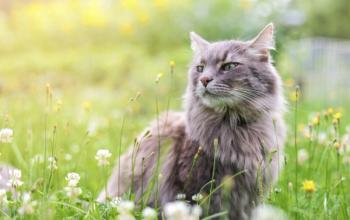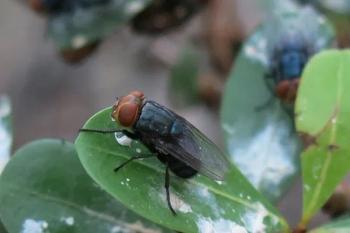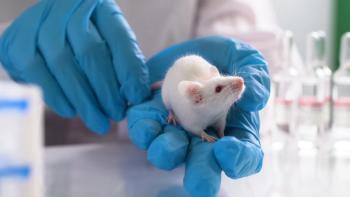
WVC 2017: Tips and Tricks for Managing Lumbosacral Disease
At WVC 2017, Dr. Sarah Moore delved into the diagnosis and treatment of degenerative lumbosacral stenosis in dogs.
At the Western Veterinary Conference in Las Vegas, Nevada, Dr. Sarah Moore, DVM, DACVIM (Neurology), noted that there are multiple causes of degenerative lumbosacral stenosis (DLSS) in dogs. “DLSS is an acquired or congenital disease in which limb pain and/or lameness is due to nerve root compression,” she said. The section of the spinal column normally affected is L7-S1 (caudal equina). “Clinical signs can be caused by a number of issues,” Dr. Moore continued, “including protrusion of the annulus fibrosus of the L7-S1 intervertebral disk, hypertrophy of the interarcuate ligament, hypertrophy/cystic dilation of the lumbosacral synovial joint capsules, proliferative bony changes in the L7 or sacral lamina, or dynamic changes in the L7-S1 articulation.”
Diagnostics
On clinical presentation, these dogs have a history of difficulty rising from a seated position and decreased activity level. They are unable to jump into the car, have difficulty going up stairs, and experience intermittent hindlimb lameness. A full neurologic and orthopedic physical examination should be performed.
Pain on physical examination should be apparent in the location of the L7-S1 region, potentially on rectal palpation of the sacrum and/or manipulation of tail. It is also possible to note pelvic limb lameness or pain when the patient is in a specific position. Lastly, dogs can have a hunched appearance and a tucked tail, which helps to take some of the weight and load off the L7-S1 nerve root spaces. Dr. Moore stated that it was important to remember that the spinal cord ends at L5-L6 but the nerve roots continue past and exit their designated foramen.
Neurologic examination will reveal deficits with the sciatic nerve, which exits the spinal canal in the affected area. “You may see a decreased pelvic limb withdrawal reflex (reduced hock flexion), a dropped or flaccid appearance to the hock when standing, and decreased tail tone,” Dr. Moore noted. You may also see a tucked appearance to the tail. Lastly, deficits such as fecal or urinary incontinence can be seen in very severe cases.
After the physical examination, further diagnostics include imaging of the lumbosacral area. Multiple modalities may be used, including radiographs, computed tomography (CT), and magnetic resonance imaging (MRI). It is possible for a patient to have normal-looking radiographs and still have severe pain and DLSS, Dr. Moore cautioned. Radiographs of this area are a good screening tool and should be performed first to rule out any lytic disease such as diskospondylitis or neoplasia. She advised that CT and MRI are helpful to determine compression lesions and are also used for surgical planning if needed.
Treatment
Medical management is always the first course of therapy, especially if clinical signs are mild. The goal for medical management is to control pain and inflammation. Dr. Moore prefers corticosteroids over nonsteroidal anti-inflammatories because “corticosteroids can help with the vasogenic edema of the nerve root associated with chronic compression.” Gabapentin can be useful to help with the nerve root pain in addition to corticosteroids.
Dr. Moore recommends surgery only for dogs with moderate to severe signs of DLSS or dogs that have failed to respond to medical management. Positive surgical outcomes range from 67% to 97% depending on which procedure was performed and if neurologic deficits were present before surgery.
Other potential options for medical management include acupuncture or epidural injections. Dr. Moore has used long-acting steroids with some success in patients with DLSS. It is also important to modify exercise in these dogs, but they shouldn’t be restricted completely. Physical rehabilitation can help build core strength to support the pelvic structures.
Dr. Goldstein received her DVM from Purdue University in 2012 and completed an internship in equine medicine and surgery at Chino Valley Equine Hospital in 2013 before joining Banfield Pet Hospital, where she currently serves as chief of staff at Banfield Pet Hospital in Evansville, Indiana. Dr. Goldstein has a particular interest in fear-free handling and the One Health initiative.
Newsletter
From exam room tips to practice management insights, get trusted veterinary news delivered straight to your inbox—subscribe to dvm360.






